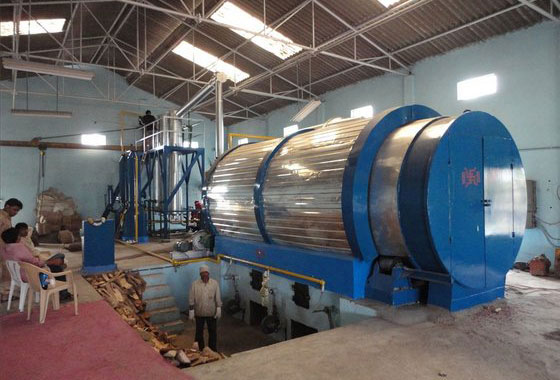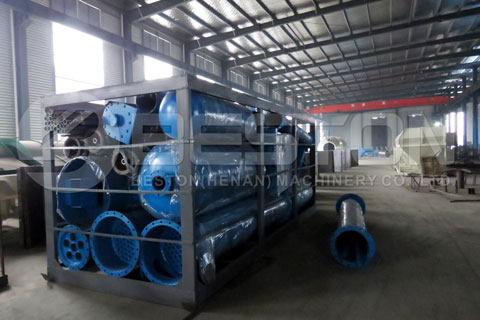With the incredible abundance of waste tyre available in nearly every country on earth, it would be nice if the researchers could find something useful to do with all of it, that wouldn’t release toxins into the environment anyway. As it turns out, there have been some advances made in recycling that enable some tyres to be recycled, however, the sorting still has to be done manually because each different kind of tyre needs a different process. In addition to that, some tyres just don’t recycle, they separate into non-usable components. There is still another process called pyrolysis of tyre to oil, where the tyres are heated to high temperatures until they break down into oil and other usable chemicals. The tyre to oil conversion machine for sale may be the best way to go. Contact Beston to get the cost of pyrolysis plant.

The Big Advantage Of Pyrolysis Over Other Tyre Recycling Methods
Once you understand how labor intensive separating all the different kinds of tyre are, and how you then need to dispose of the unwanted varieties, then you’ll get how valuable pyrolysis is to the world. By heating the tyres up to a very high temperature, but not burning them, you can get a good separation of the oil and other components. The oil usually makes up about 80% + of the weight of the plastics. Beston offers skid-mounted pyrolysis plant, batch and continuous types.
You can also mix a whole bunch of different tyres together saving a huge labor cost so nearly everything can be automated. The list of tyres that can go through the process is PVC, LDPE, PS, PP, HDPE, and PET which covers a wide range of bottles, and packaging products that are now filling up landfills. Then you’ll have to invest in a waste plastic to oil machine to do the work.

How Big Is A Waste Tyre To Oil Machine?
Of course the plants come in many different sizes ranging from 15 tons per day, 30 tons per day and on up. It will usually consist of a large hopper that shreds and grinds up the tyre into a usable form. Then a conveyor to take the tyre to the actual reactor where the materials are heating to about 400 C.
It’s important to note that at these temperatures the tyres would most likely burn if oxygen was present, leaving an ugly mess, no oil, and emitting toxic fumes. But without oxygen, the pyrolysis takes place in the reactor without incident. At the end there will be oil, carbon black, and some hydrocarbon gas. The oil will be mostly made up of kerosene, gasoline, and diesel oils, with a few higher priced solvents like xilene, benzene, and toluene.
Many Of The Modern Pyrolysis Reactors Can Take Tires And Tyres
If you check online you’ll note that some of the newest tyre to fuel machine for sale can take waste tires at the same time as the mixed tyres. Thus making a more versatile business model since there is a huge over abundance of waste tires in the world as well. When recycling tires you will also benefit by having waste steel to profit from which highly valuable in today’s market. See more pyrolysis reactor types.
If you live in an area where there are piles of tyre bottles stacked up at the local recycling station, and they’re charging several dollars for each tire, then a waste tyre pyrolysis machine could be a profitable venture for you. There is plenty of information on the internet to read up on to see which machine would best suit your needs. View Beston Group, a reputable manufacturer.